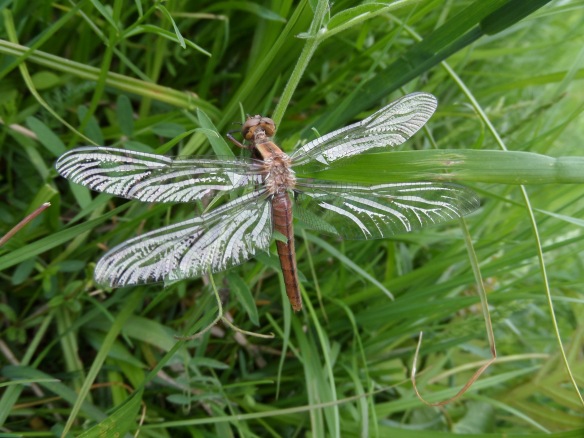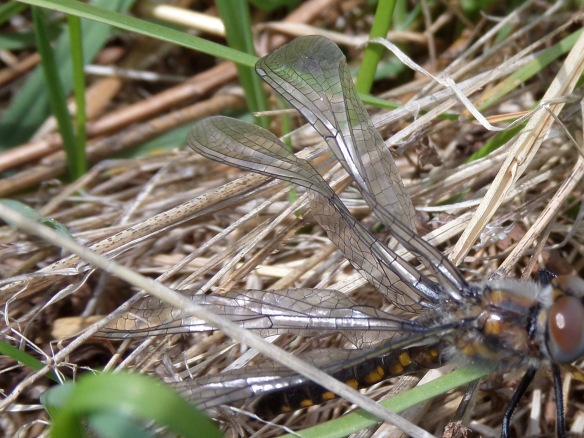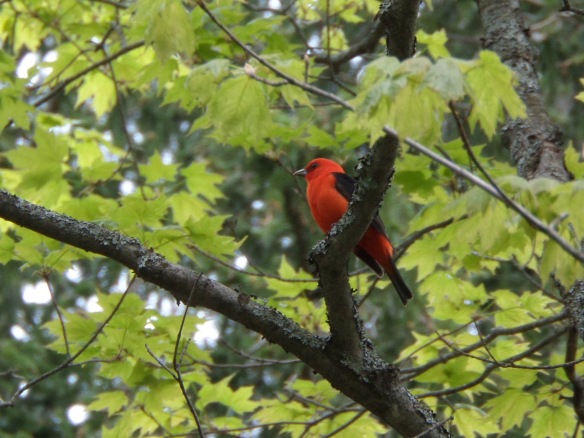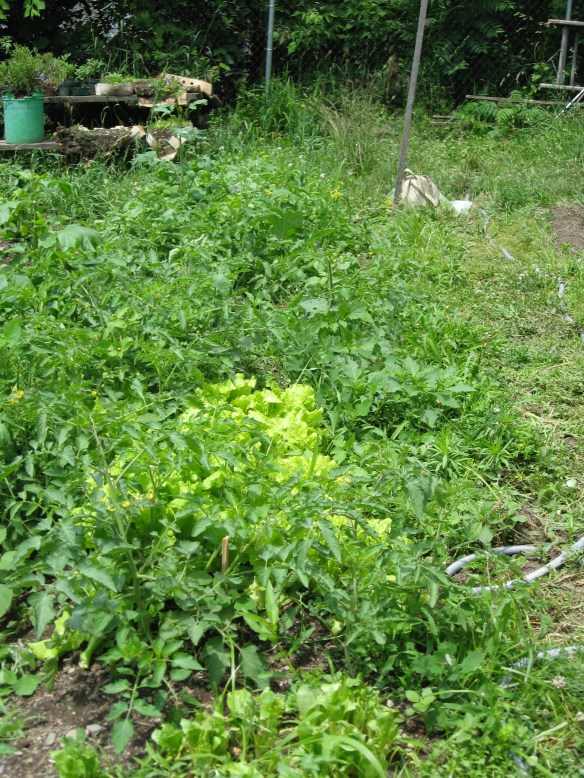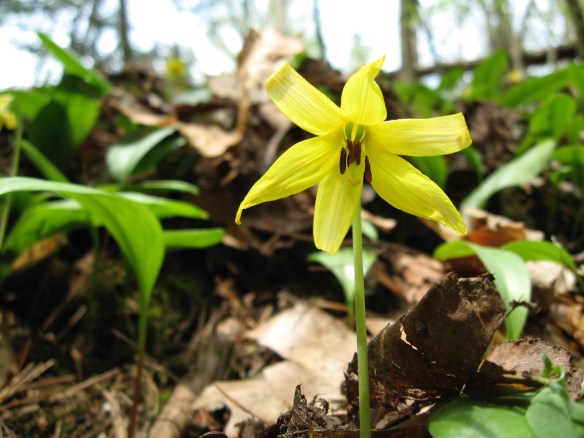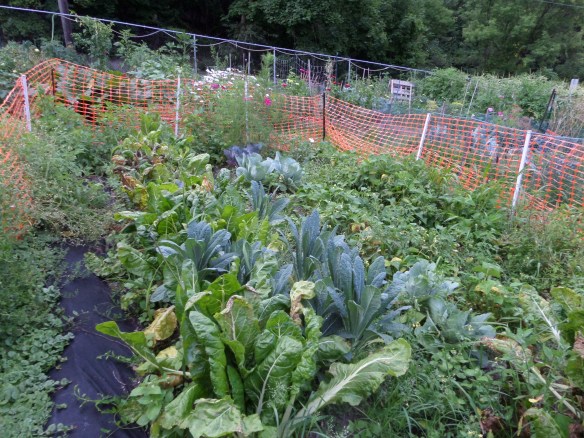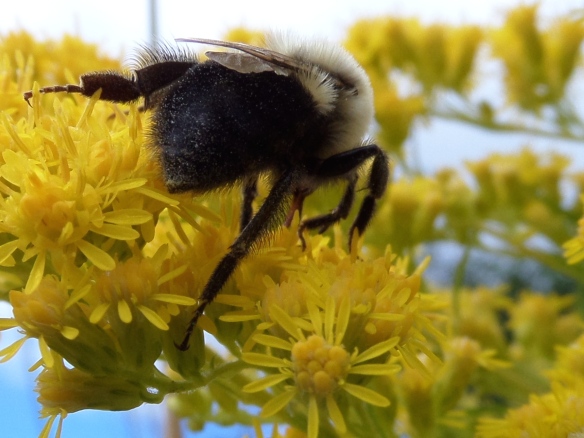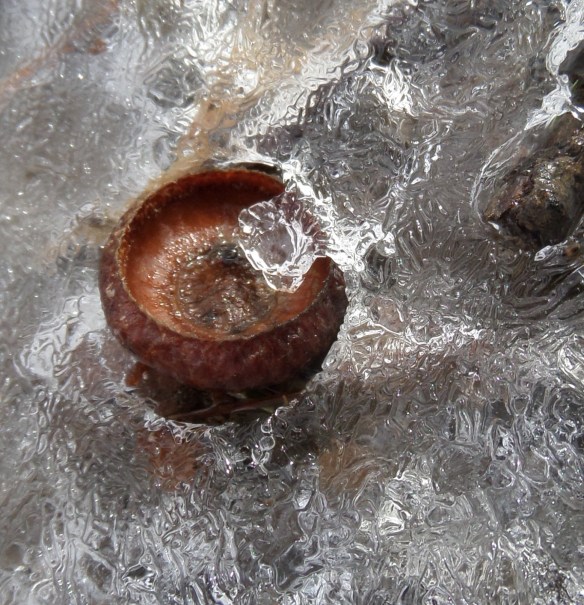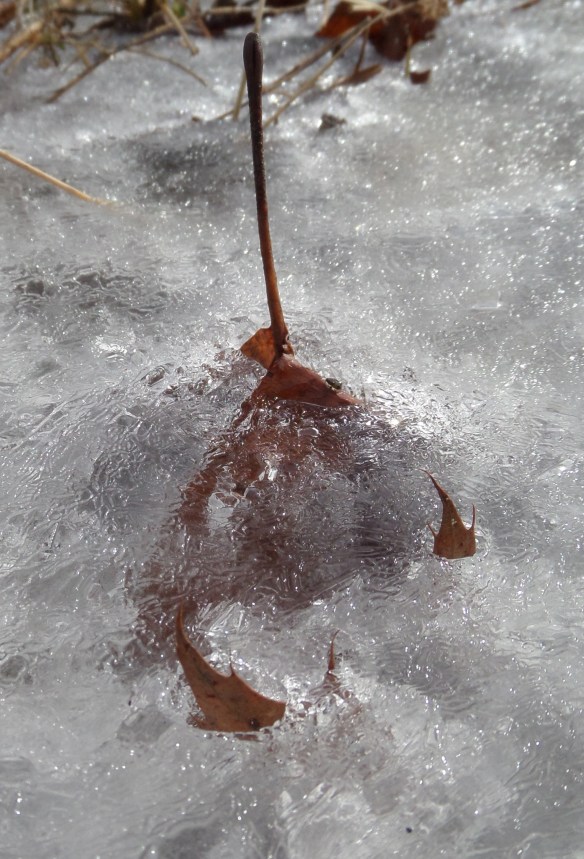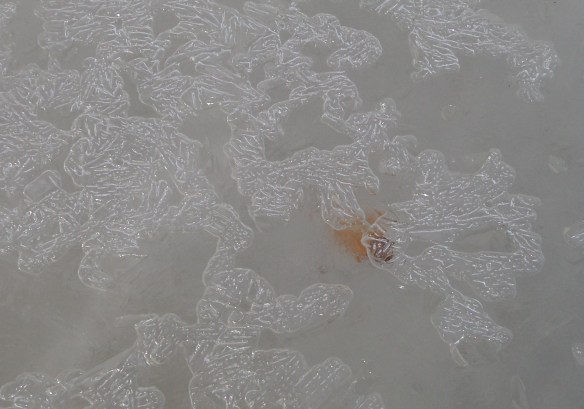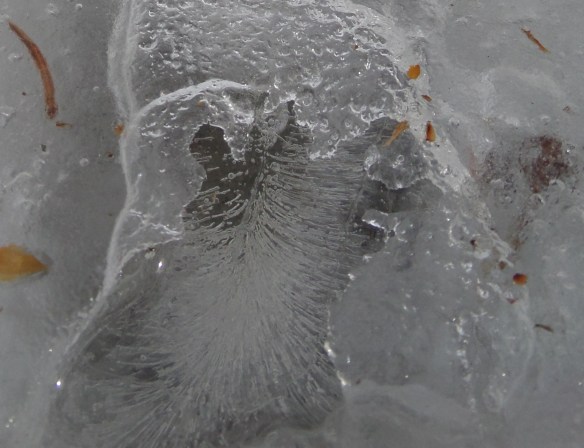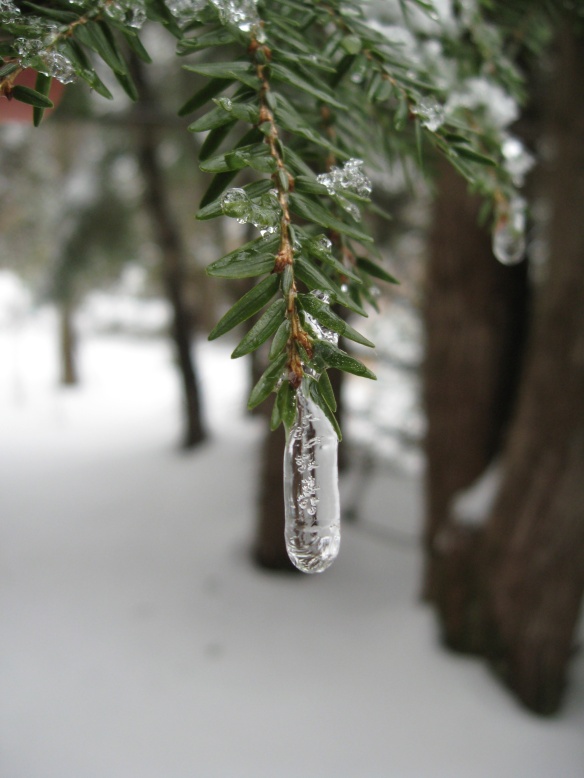
Orange newt in thick August mud at Partridge Run, Berne NY
Over two months ago, my buddy C and I hiked an overgrown path at Partridge Run, south of Albany. Like two girls in a fairy tale, we hopped and skipped and lolly-gagged, cameras instead of baskets-to-Grandma in hand. Small frogs surprised, bursting up with powerful rear legs from well-hidden spots in the mud. Orange newts appeared and disappeared, foreshortened limbs squiggling their torsos in cartoon fashion. We moseyed along, but then were stopped short by encroaching poison ivy and, smartly, turned around.
On the trail back to the car we spied something. A dark thing, in the middle of the path. A rock? A tree limb? An ailing creature? Cue the scary Little Red Riding Hood music.
I kneeled down to examine it. Looked up at my hiking partner, concerned. Looked down to take in the evidence again. Squinted up as we nodded simultaneously.
Yup.
Looks like it.
Bear, huh?
Yeah, see the blackberry seeds in it?
It smells musky around here–must be pretty fresh.
Oh. Look here in the mud. A claw print.
Straightaway we realized we should have been alert in the woods for something other than late summer wildflowers, amphibians, and butterflies. We quickly re-oriented to the aqua paint on the trees—Long Path “blazes” that marked our exit out.

Bee on the wing, before.
Only once before I’d been close to a bear in the wild (and known it), and that was a few months earlier at Kripalu. One early morning as the sangha gathered around a guest speaker, he noted drily: “You may want to look out the window.”
Across the back lawn, a youngster Ursidae was galumphing and gamboling, presumably drawn by the smell of our breakfast cooking. Since we saw the bear through glass, it was much more like a zoo encounter than a live one, though it made us all think twice before taking the paths alone at dusk.
Bears have also shown up in my nightmares, though not recently. Terror comes from a sudden smothering attack in the dark, from the inability to escape a creature so much larger and more powerful than me.
What I do know outside of nightmares: Black bears live in this part of New York, but not brown bears or the subset of brown bears known as grizzlies, which have a reputation of being more aggressive than black bears. The advice: Don’t hang out near rich food sources like fruit. Don’t get between a mother bear and her cubs. Hibernation starts in October and if you see a bear in January be very careful: it is likely a female, in labor, the most inclined to attack.
On the other hand, I have heard many stories of fairly peaceable bear-human encounters, where everybody just backed away. Because, very importantly, bears are reclusive, prefer not to run into humans, and so we hikers should proactively announce our presence by making noise, shaking bells or singing.
***
Therefore, back in the woods, my helpful hiking mate, who was aware we should not be silent in case we came upon the depositor of the dung, began to shout.
Oh Mr. Bear, Mr. Bear!
SHE’S the plump and juicy one. I am the old stringy one. (Pause, as if listening.)
Yes, the one with the baseball cap, that’s her.
Only half-laughing, we sped our legs to cover territory fast, then faster. She continued: Oh Mr. Bear, Mr. Bear! We had a lovely visit but we’re leaving now!
Arriving unscathed at the car, we weren’t ready to give up on our day in spite of run-ins with poison ivy and bear poo. We drove south, arriving at a more civilized path, one that led to Tubbs Pond.
I remarked as we sat down by the water, Glad I didn’t stop to eat my lunch in the woods.
Then it dawned on me the horrendous portent of what I carried in my bag, into what had proven to be active bear territory—cue more sinister music—as my fellow hiker hollered gleefully into the trees nearby, Oh Mr. Bear! Mr. Bear!
She’s got A QUARTER OF A PEACH PIE in her bag!
I whispered: And (more dawning, a veritable sunburn of realization) a sandwich, peanut butter and–
Whereupon she added with relish to her public service announcement: AND HONEY!

Peach pie, water and sky at Tubbs Pond.
In the sunlight of the Tubbs Pond dock, safely consuming my late-summer pastry, I thought: Huh. In our hurry to get the heck outta there, fresh bear scat in our noses, I did not stop to take pictures.
And was beginning to regret it.
I ventured to my partner: Can we go back? I’d love to get a picture maybe of the tracks…is that crazy? My heart thumped in my throat like our legs had moved: a little fast, then faster. Without too much hesitation, she acquiesced. Only twenty minutes of walking, we figured…
Of course I was afraid. It would be a calculated risk. End of summer, blackberries obviously nearby, recent proof right in our footsteps of large alarming creatures–at least one of them.
But if I let the fear beat me, I might regret it forever, I thought. I really wanted photographic evidence of what we’d seen.
And lately I’m tired of being afraid of things, always stopping with “Maybe I’ll hurt myself, maybe I’ll look stupid, maybe I can’t be A+ at anything.” My new more honest self says: “Of course maybe I’ll hurt myself doing new things and of course I look stupid sometimes and yes, maybe the bear will return to the scene of his crime—er, droppings”—but should I let that keep me away?
My pulse continued to increase. I noted and then ignored it, as we climbed back into her vehicle.
After all, it was with some knowledge that we were deciding to proceed—to make noise, and look up and around while hiking, not just at our feet. Aware that if the wind is blowing at your back, the bear can smell you up to a mile away; if at your face, you can stumble on them because they can’t smell you at all.
Not out of the car a minute, hand cupped around her mouth, my buddy started:
The peach pie is in her belly, if you’re looking for a treat.
Jingling keys and singing, we found the path. She mumbled under her breath: Can’t believe we are going back into bear infested woods to get a ratsa-fratsa picture. I thought to myself—If I get attacked by a bear I’m gonna not only feel stupid, I’m going to have BEEN stupid.
Off to the side, something dark and thick swam forward in the woods; my eyes bulged and attention narrowed sharply–Oh my god, there’s a bear!
–Oh, a burned stump. In pseudo bravery, an aside to the cutthroat hiking partner: Here is where in the scary movie they say: Don’t do it! Don’t go back! You know there are bears in there!
Heart still thumping hard, I slowed my inhale, slowed my exhale. It didn’t help.
Maybe this IS a scary movie, I thought. Maybe I AM part of a fairy tale, but I can’t think about it now; I’m busy paying attention to my surroundings. I shook my keys louder.
We walked quickly, one ahead, one in back.
I will stay behind you and have my camera ready, so I can take pictures when the bear comes out to greet you. She snickered mercilessly.
I hoped she knew it’s ok to take pictures with a small camera, but not one with a big lens because the bear interprets that as a large and very aggressive eye. I did know that when you encounter a bear, you look sideways at the ground, and back away or circle around.

Earlier we’d passed Joe Pye Weed, visited by a non-lethal creature.
We arrived at the fated spot much more quickly than we thought we would; fear definitely distorts your sense of time. Involved in looking for the prints again, we walked along the path identifying deer and raccoon in the thick mud, and others, including the horse’s hooves we’d seen all over Partridge Run.
Then there they were–round, small, but bear’s prints, definitely not dog, definitely not people or coyote…click-click the camera went. I neglected to check the woods every second or two. In fact, the more bear-free minutes that passed, the less afraid I felt. We finished and hurried back to the car, the distance even shorter this time.
On our final steps:
A granola bar, Mr. Bear, I think she’s got one of THOSE still.
In the car, we giggled in relief. I had faced my fear AND gotten the pictures.
***
I am glad I had a hiking partner who was willing to go back, even if she was (verbally anyway) also willing to throw me to the omnivores. Glad I got to enjoy my peach pie, and the fairy tale lesson did not involve being swallowed and cut out again, or some outside hero saving me. Glad I’ve learned to not live without fear but to feel it and choose my action.
Having a wicked-funny friend along sure helps.
***
Postscript: At home I analyzed the photos. The ground was so wet and gravelly, it was hard to capture the details of the prints that were visible three-dimensionally, in person. You can’t see where we saw that nails and claws had dug in, versus just some other animal’s pads displacing the mud. But the dung was delightfully clear.

Yup, there it is. The pile of scat was not large, hence the bear wasn’t either. Which is just what the size of the prints indicated as well.







